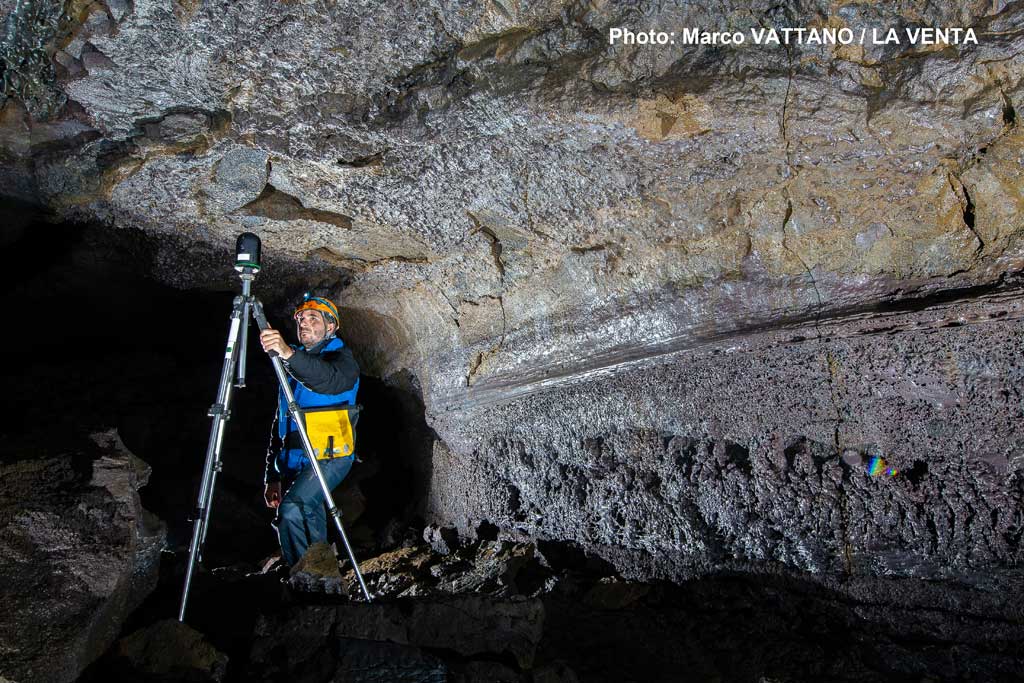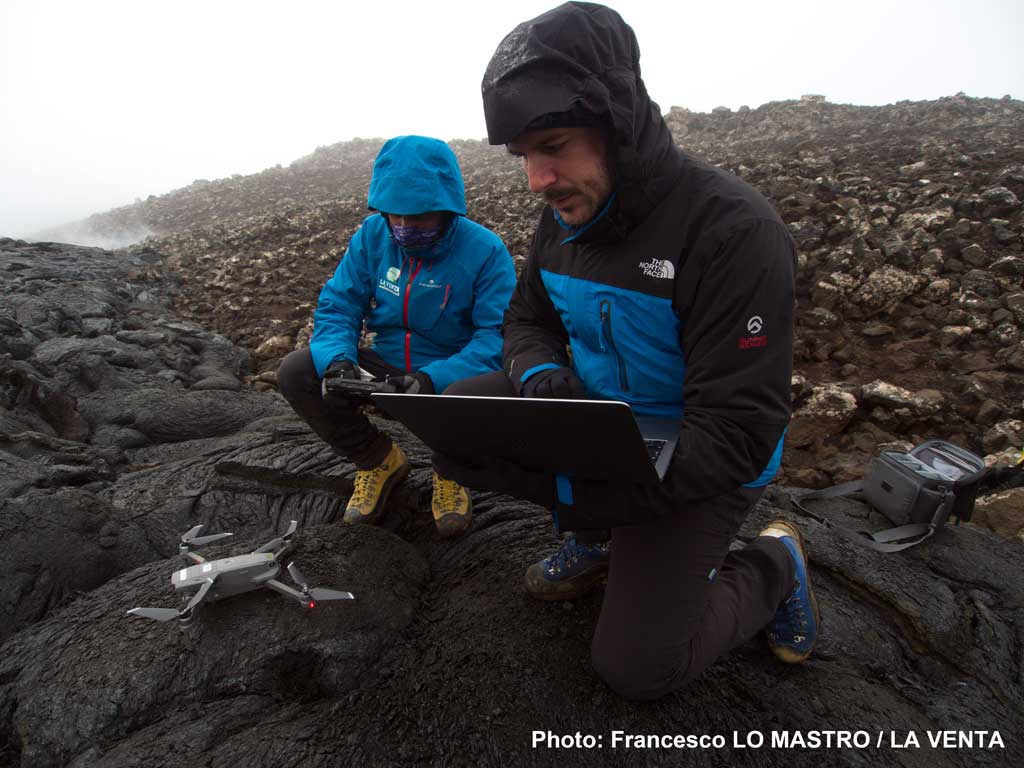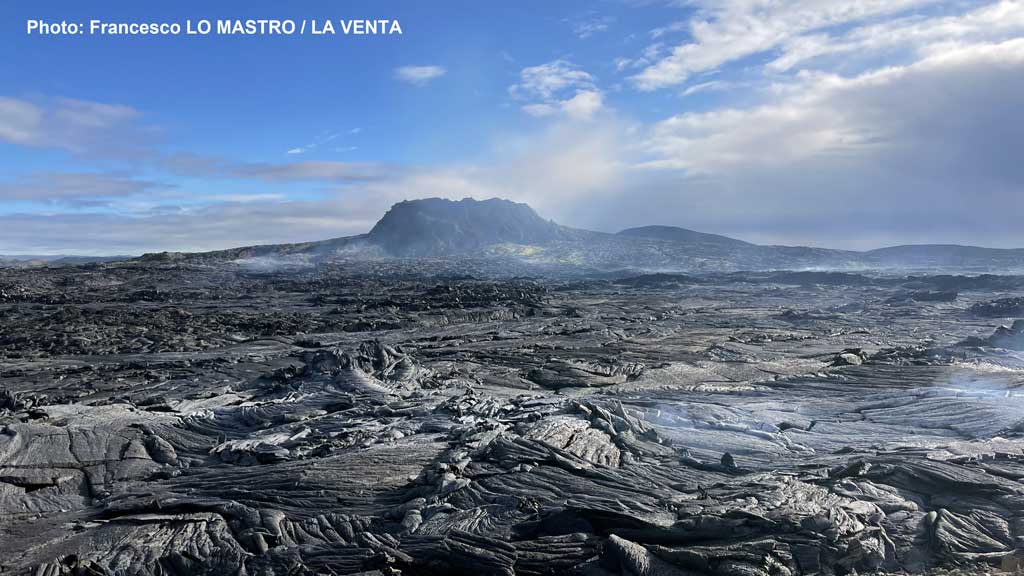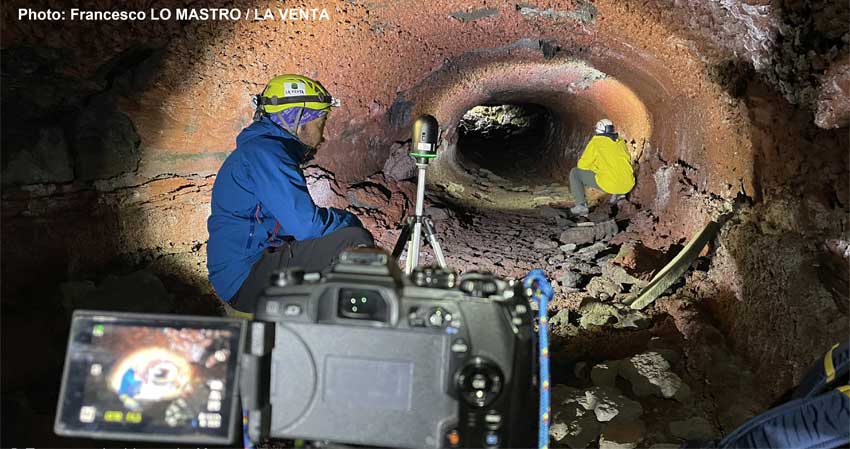A few days ago, the La Venta team returned to Italy and carried out the first speleological exploration of the Icelandic volcano Fagradalsfjall as part of the "Hraun" project for the study of the evolution of lava tubes.
The expedition has achieved all the objectives set, documenting with a drone with a thermal chamber several inputs of lava tubes formed a few weeks ago on the flanks of the volcano. As hoped for the purposes of the project, the eruption stopped with the event of 17-20 September, therefore the mappings made represent an effective starting point for the speleological explorations that we plan to undertake in May-June 2022. During the numerous flyovers, 324 thermal images were acquired, covering 5 different areas, including the large portal from which the last active casting was generated in September. At the time of filming, the surface of the lava has already partially cooled, with areas that still exceed 70 ° centigrade. Inside the inlets and collapses we measured temperatures approaching 200 °, while inside the pipes the temperatures are certainly much higher. Being the thickness of the castings sometimes of a few tens of meters, it is evident that it will take a few more months before the caves become explorable by innovative technologies (collision tolerant drones) or by speleologists with protective equipment.

Advancing with the laser scanner survey in the Búri cave
This first prospection also allowed us to start a fruitful collaboration with the Meteorological Institute of Iceland (Veðurstofa) which deals with the monitoring of volcanic risk, and with some researchers of the Natural History Museum of Rjekiavik and of the University of Iceland. . The foundations have been laid for fruitful cooperation, through the exchange of data and the sharing of scientific objectives.
During the many rainy days when it was not possible to fly with the thermal drone, we took advantage of the hospitality of the Icelandic Speleological Society to visit some caves being explored in the Reykjanes peninsula. Of particular interest was the realization of the three-dimensional survey with laser scanner of the Búri lava tube, one of the largest and most spectacular known conduits in Iceland, discovered only in 2005.

Planning flights with the drone equipped with a thermal camera
The study of tubes formed in more ancient eruptions in the vicinity of the Fagradalsfjall allows us to have a greater knowledge of speleogenetic processes, helping us to predict what we may encounter inside the newly formed cavities.
This first stage of the project can be said to be over, we return home with the desire to return as soon as the temperature conditions allow access to the caves of this spectacular volcano.
Francesco Sauro

The large and spectacular Búri lava tube gallery, discovered in 2005 by the Icelandic Speleological Society
This project is supported by Kibo.it, Studio Atlante, Vigea, Miles Beyond, Ferrino, Tiberino, Amphibious, Scurion, and carried out in collaboration with Veðurstofa Íslands (Icelandic Met Office), University of Iceland, Icelandic Speleological Society, National Institute of Astronomy and Physics , University of Bologna and University of Padua, with the patronage of the Italian Speleological Society. Special thanks to Dr. Sara Barsotti of the Veðurstofa Institute, aÞórir Már Jónsson and Guðni Gunnarsson of the Icelandic Speleological Society for their support and hospitality.
The expedition was attended by: Tommaso Santagata, Francesco Sauro, Daniela Barbieri, Antonio De Vivo, Gaetano Boldrini, Marco Vattano, Marco Mecchia, Giovanni Rossi, Riccardo Pozzobon, Francesco Lo Mastro, Giuseppe Savino

The still smoking lava fields along the flanks of the Fagradalsfjall volcano











